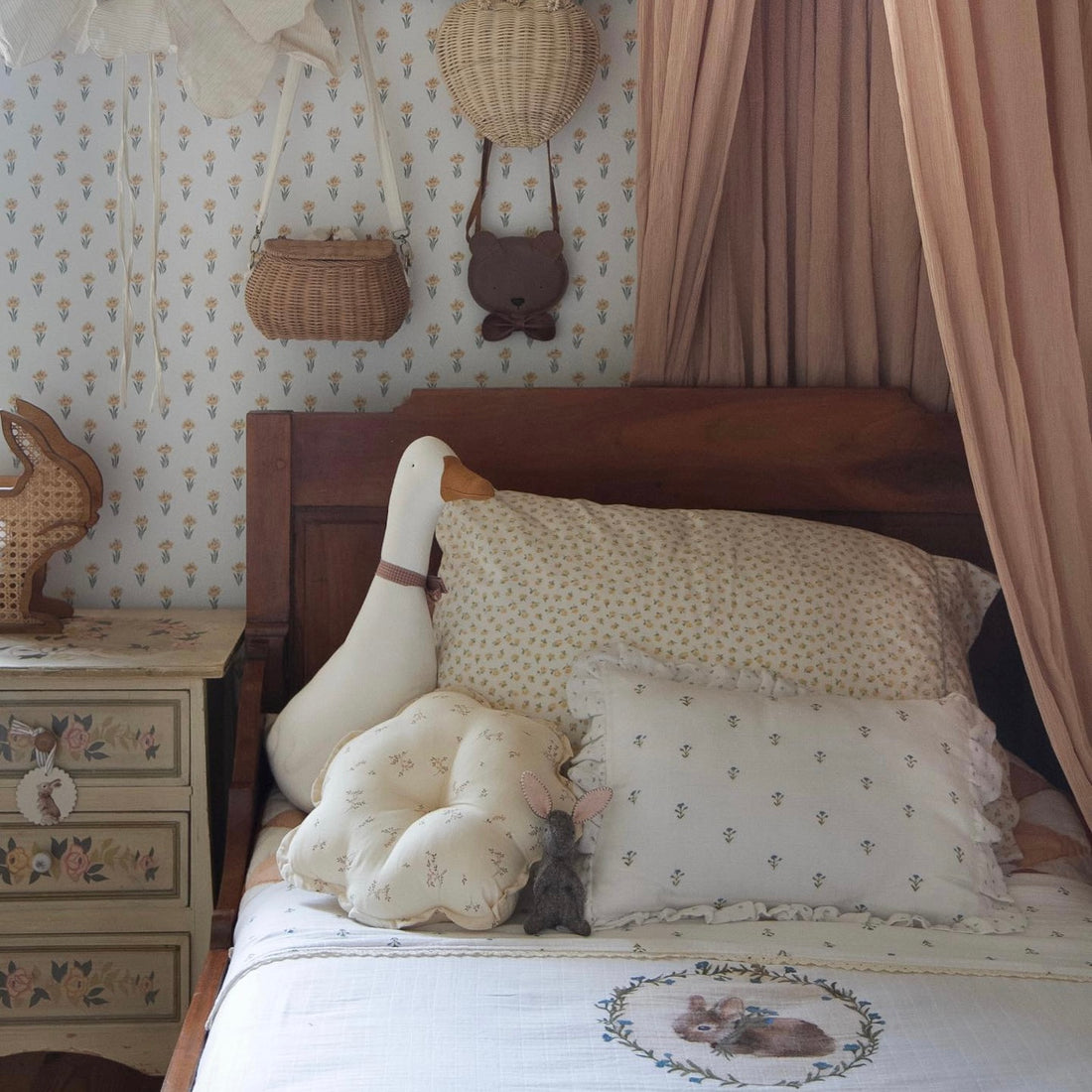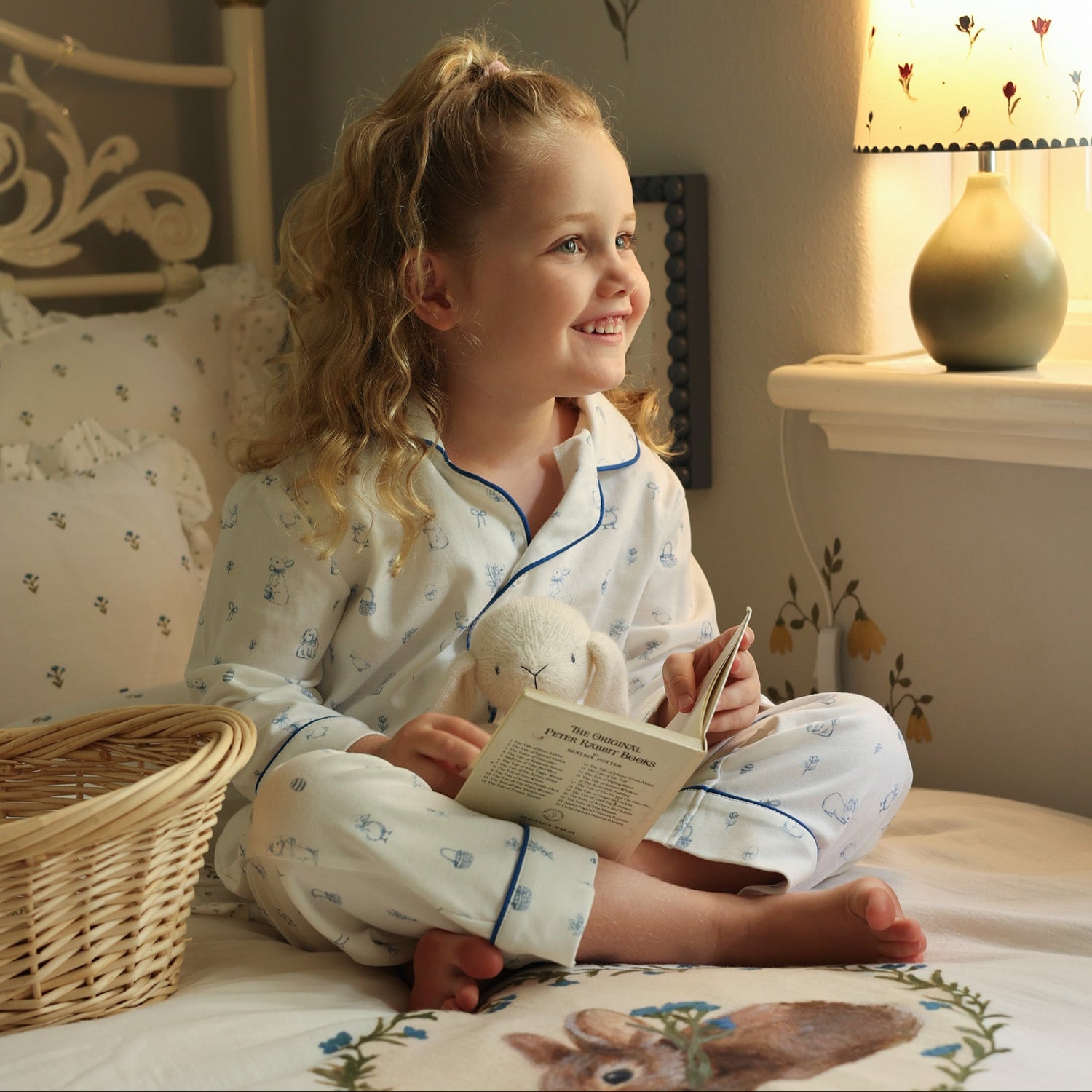
The Best Room Colours For Kids
Share
Creating a Grounded, Calming Environment for Children's Rooms: A Research-Based Guide
Colours have a significant impact on our mood and behavior, the same can be said for our children. Selecting the right hues can help prevent overstimulation and create a soothing space. We’ll explore research-backed insights to help you choose the best colors for your child's room, fostering a serene and balanced atmosphere.
The Psychology of Colours
Colour psychologists recommend painting your child’s room with a calming palette to help prevent overstimulation and anxiety, to assist in promoting calmness, relaxation, and learning.
So, while fun, vibrant colors might come to mind when decorating your little one’s room, it’s important to remember that sleep is the main function of their bedroom.
'Shades of blue and green reminiscent of green fields, clear skies and calm bodies of water have been proven by research to have far reaching psychological and physiological benefits.
Research has found that colours with low wavelength are perceived more pleasantly as they are less stimulating to the human mind compared to high wavelength which are significantly more stimulating.
Colours with low wavelength (such as blue and green) were shown to have a clear relationship with experiences of quiet, peace, tranquillity, and association with clear sky. In line with these findings, other research has demonstrated the effects of colour on our automatic nervous system. Specifically, blue was proven to decrease heart rate and skin conductivity response, whereas red and yellow proved to increase them.
Muted and neutral tones, such as those found in nature, are beneficial for all babies and young children but especially for those who are highly sensitive to their environment. Children with autism, for instance, have been shown to respond more positively to pastel, neutral and muted colours as they act to calm and soothe. Bright, bold, and intense colours by comparison proved to be too distracting and stimulating for these sensitive children'. - Design of Grounding
Wallpaper is a lovely choice for a children's room, it creates interest and can be warming to a space. A muted wallpaper that creates texture and depth is a perfect addition to a children's room.
Age-Specific Colour Recommendations
'According to a study done through the University of California, younger kids respond positively to lighter colours while dark shades tend to have a more negative association. Knowing this, it is important to consider the effect that colors have on their environment for sleep and relaxation purposes.'
Infants (0-1 year)
For infants, softer, pastel colors are ideal. Their developing eyes are sensitive to bright, intense colours, which can be overwhelming.
- Light shades of Blue or Green: These colors promote tranquility and can help soothe a fussy baby.
- Soft whites or Beige: These colours can provide a warm and comforting environment.
Toddlers (1-3 years)
Toddlers are active and curious, but it's essential to create a space that doesn’t overstimulate them.
- Light shades of Blue or Green: These colours provide balance, helping to calm and comfort during play and rest.
- Soft Lavender or Warm Beige: These colours can create a cozy and inviting space.
Preschoolers (3-5 years)
At this stage, children begin to develop their own preferences. It’s beneficial to involve them in the colour selection process while ensuring the colours chosen are calming.
- Muted Primary Colours (Soft Blue, Gentle Yellow, Light Green): These can stimulate learning and creativity without overwhelming the senses.
- Lavender and Soft Gray: These colours can encourage creativity and provide a balanced environment.
School-Age Children (5-12 years)
As children grow, their rooms often need to serve multiple functions: a place for sleep, study, and play. Therefore, a balanced, calming colour scheme is essential.
- Blue or Green: These colours are ideal for creating a calm and focused environment, aiding in concentration and study.
- Neutral Tones with Soft Accent Colors: Soft white or lavenders can be used in moderation to add a touch of warmth without overwhelming the space.
Considerations
- Lighting: The room’s lighting will affect how colors appear. Test paint and wallpaper samples under different lighting conditions before making a final decision.
- Personal Preferences: Involve your child in the decision-making process, especially for older children. Their room should reflect their personality and interests while maintaining a calming atmosphere.
- Accent tones and colours: Although you want the overall feel of the room to be calm, adding accent colours to compliment the room is a nice way to lift the space. Adding deep tones of brown or green that bring an earthy, warm feel to the space. Or little pops of deeper pinks, red, blues etc. to add a little fun.
In summary - Choosing the right colours for your child’s room can significantly impact their well-being and development. By understanding the psychological effects of different colours and considering age-specific needs, you can create a space that is both nurturing and serene. Balance calming hues with gentle accent tones, and focus on creating an environment that fosters relaxation and comfort.










